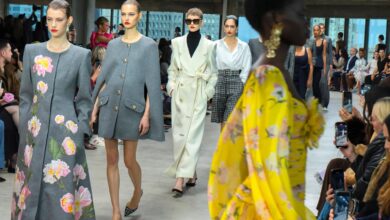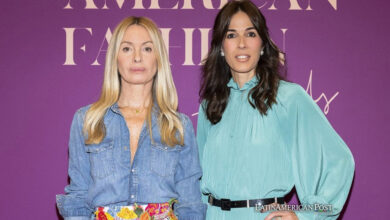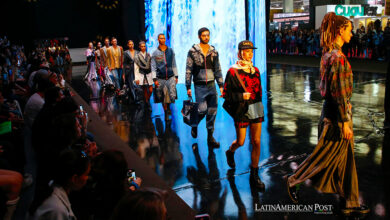Latin American Fashion Summit: fashion transformation
The Latin American Fashion Summit in Colombia highlighted one of the most important fashion changes when joining the digital world: the influencers.

Conversation during the LAFS with Carolina Herrera and Carmen Busquets. / Photo: instagram.com/latinamericanfashionsummit
LatinAmerican Post | Juliana Suárez
Listen to this article
Leer en español: Latin American Fashion Summit: transformación de la moda
From November 12 to 16 the Latin American Fashion Summit was held, an event that, in addition to being a sample of youth, urban and fully adaptable fashion the world today, was an approach and example of the current transformation oftThat luxurious world in the digital age.
It is not a secret that the digital world is transforming the different sectors of society, from politics to entertainment. In that change, companies, public figures, and organizations – all of society – have had to adapt to the platforms that now turn out to be an essential tool to reach the public. The fashion world has not been the exception and, on the contrary, it has been one of the sectors that have benefited the most from digital content.
In that equation, the influencers have played a leading role, even making the work of fashion journalism emerge to certain types of content that they cannot perform, but taking away the role of old roles. Thus, some brands and events have taken advantage of this change that allows fashion, including luxury brands, to anyone who should only have access to the internet. The viewers now live fashion weeks and the latest trends from the comfort of their home through content creators that allow creating a link between fashion and the user.
This event, LAFS for its initials, had its second edition in Cartagena, Colombia. During the days of the event, designers and important figures in the media and the fashion industry gathered to speak on panels on different topics that concern not only fashion in general but the specific needs of the region.
Sustainable fashion, the importance of the cultural celebration, inclusion, and empowerment of local talent were some of the most important issues considering the moment in which one lives, where fast-fashion and cultural appropriation are taking a turn around the responsibility of both the producer and the user.
Read also: The good, the bad and the ugly of the Latin Grammy
Important global figures took part as Francisco Costa, the Brazilian and former creative director of Calvin Klein, and Carolina Herrera, Venezuelan designer and director of the fashion house that bears the same name. On the other hand, events, dinners, and gala nights were also present in the most tourist and glamorous city of Colombia. Colombian designers such as Silvia Tcherassi and Esteban Cortázar were part of the agenda.
But beyond that the event sought to boost the Latin American market highlighting from the most recognized designers to small brands that begin to reach the market, the event also highlighted that important role of the influencer. Many of the attendees were part of this fashion sector, where social networks play a fundamental role.
The coverage, after all, did not reach fashion enthusiasts only thanks to large traditional media such as Vogue, but the same attendees were responsible for highlighting the most important. Taking into account this digital and fashionista presence, Street Fashion, which in events like these is considered the most viewed garments in the attendees, and not in the catwalks, had an essential component. This approach to fashion shows that the industry is not only for the models nor is it an unattainable imaginary, but instead has ceased to be a luxury and is material and attainable.
For this reason, the convention not only had great designers, but small businesses and exponents that are just beginning to look for their place in fashion could also stand out. For this, there was a pavilion at a location in the Historic Center of the city, where brands could show their products and all attendees could attend during the days of the event.
Casa 1537 was the place where this happened, but it was not everything. Precisely thanks to the transformation of this industry to a more affordable world for everyone, the event also had networking spaces so that entrepreneurs and different fashion sectors could have spaces to meet and grow together, taking advantage of the support for being the same region. Thus, Latin American empowerment was not only present from the talks and panels but also in each of the attendees.




